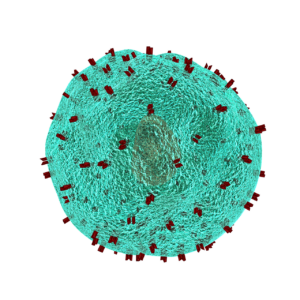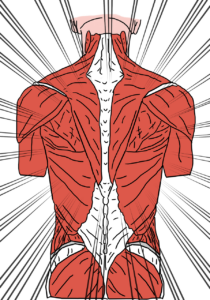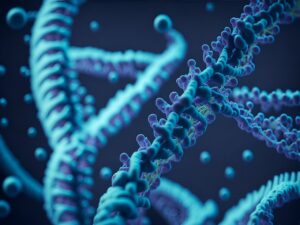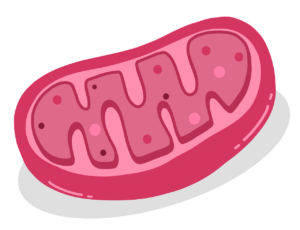 Duchenne muscular dystrophy (DMD) is a monogenic muscle-wasting disorder and a priority candidate for molecular and cellular therapeutics. Although rare, it is the most common inherited myopathy affecting children and so has been the focus of intense research activity. It is caused by mutations that disrupt production of the dystrophin protein, and a plethora of drug development approaches are under way that aim to restore dystrophin function. In this article the latest therapeutic strategies that are under development and being deployed to treat DMD are discusses. Lessons from drug development programmes are likely to have a major impact on the DMD field, but also on molecular and cellular medicine more generally. Read the full article here.
Duchenne muscular dystrophy (DMD) is a monogenic muscle-wasting disorder and a priority candidate for molecular and cellular therapeutics. Although rare, it is the most common inherited myopathy affecting children and so has been the focus of intense research activity. It is caused by mutations that disrupt production of the dystrophin protein, and a plethora of drug development approaches are under way that aim to restore dystrophin function. In this article the latest therapeutic strategies that are under development and being deployed to treat DMD are discusses. Lessons from drug development programmes are likely to have a major impact on the DMD field, but also on molecular and cellular medicine more generally. Read the full article here.
Publications
 Maffucci syndrome is an extremely rare disease which can manifest symptoms as early as childhood. It is estimated that there have been <300 cases reported globally. However, this number is likely to be an underestimate. Maffucci syndrome is characterized by multiple enchondromas and soft tissue hemangiomas, which can cause growth and developmental malformations. In addition to bone deformities, pathological fractures and a loss of mobility, patients with Maffucci syndrome may develop secondary central chondrosarcoma and have a higher risk of developing non-skeletal malignant tumors, such as gliomas and mesenchymal ovarian tumors. This report provides information about this disease through the use of imaging, physical examinations, clinical manifestations and the treatment strategy used in a case of 15-year-old male diagnosed with Maffucci syndrome. Read the full article here.
Maffucci syndrome is an extremely rare disease which can manifest symptoms as early as childhood. It is estimated that there have been <300 cases reported globally. However, this number is likely to be an underestimate. Maffucci syndrome is characterized by multiple enchondromas and soft tissue hemangiomas, which can cause growth and developmental malformations. In addition to bone deformities, pathological fractures and a loss of mobility, patients with Maffucci syndrome may develop secondary central chondrosarcoma and have a higher risk of developing non-skeletal malignant tumors, such as gliomas and mesenchymal ovarian tumors. This report provides information about this disease through the use of imaging, physical examinations, clinical manifestations and the treatment strategy used in a case of 15-year-old male diagnosed with Maffucci syndrome. Read the full article here.
 Pompe disease is a rare, inherited condition that causes progressive weakness, cardiomyopathy and neuromotor disease due to the accumulation of glycogen in striated and smooth muscle, as well as neurons. While enzyme replacement therapy has dramatically changed the outcome of patients with the disease, this strategy has several limitations. Gene therapy in Pompe disease constitutes an attractive approach due to the multisystem aspects of the disease and need to address the central nervous system manifestations. This article reviews the recent work in this field, including methods, progress, shortcomings, and future directions.
Pompe disease is a rare, inherited condition that causes progressive weakness, cardiomyopathy and neuromotor disease due to the accumulation of glycogen in striated and smooth muscle, as well as neurons. While enzyme replacement therapy has dramatically changed the outcome of patients with the disease, this strategy has several limitations. Gene therapy in Pompe disease constitutes an attractive approach due to the multisystem aspects of the disease and need to address the central nervous system manifestations. This article reviews the recent work in this field, including methods, progress, shortcomings, and future directions.
Recombinant adeno-associated virus and lentiviral vectors are well studied platforms for gene therapy in Pompe disease. These products can be further adapted for safe and efficient administration with concomitant immunosuppression, with the modification of specific receptors or codon optimization. Recombinant adeno-associated virus has been studied in multiple clinical trials demonstrating safety and tolerability.
Gene therapy for the treatment of patients with Pompe disease is feasible and offers an opportunity to fully correct the principal pathology leading to cellular glycogen accumulation. Further work is needed to overcome the limitations related to vector production, immunologic reactions and redosing. Read the full article here.
 Type I dentin dysplasia (DD-I) is a rare genetic disorder with autosomal dominant or recessive inheritance at risk of late or long-misunderstood diagnosis because the teeth, compared to other degenerative dentin diseases, do not have coronal defects and/or alterations but only at the root level (absent, conical, pointed roots, and obliterated pulp canals). The first radiographic suspicion often occurs only in case of sudden mobility and/or abscesses of the permanent teeth. Genetic tests confirm the diagnosis.
Type I dentin dysplasia (DD-I) is a rare genetic disorder with autosomal dominant or recessive inheritance at risk of late or long-misunderstood diagnosis because the teeth, compared to other degenerative dentin diseases, do not have coronal defects and/or alterations but only at the root level (absent, conical, pointed roots, and obliterated pulp canals). The first radiographic suspicion often occurs only in case of sudden mobility and/or abscesses of the permanent teeth. Genetic tests confirm the diagnosis.
This case report describes the oral and radiographic characteristics of two siblings, 12 and 10 years old, a male and a female, at an early age affected by DD-I, whose diagnosis was made for a first orthodontic visit. The father and the older child had already undergone dental and orthodontic treatments, respectively, without the disease being suspected by the dentist. Genetic tests support the diagnosis of DD-I. Following the diagnosis, the patients begin a process of close periodic checks every 3-4 months to monitor their situation.
The ability to recognize the radiographic features characteristic of DD-I is very important to avoid prejudicial diagnostic delays and to be able to plan the long-term treatment of these patients better, especially when the pathology was primarily misrecognized in the family. Read the full article here.
 Patients with rare diseases usually go through years of diagnostic odysseys. The large number of rare diseases and the associated lack of expertise pose a major challenge to physicians. There are few physicians dealing with patients with rare diseases and they usually work in a limited number of specialized centers. The aim of this study is to evaluate the diagnostic efficiency of an expert center.
Patients with rare diseases usually go through years of diagnostic odysseys. The large number of rare diseases and the associated lack of expertise pose a major challenge to physicians. There are few physicians dealing with patients with rare diseases and they usually work in a limited number of specialized centers. The aim of this study is to evaluate the diagnostic efficiency of an expert center.
For the purpose of this study the diagnostic pathway of 78 patients of the outpatient clinic for rare inflammatory systemic diseases with renal involvement is analyzed retrospectively.
A correct diagnosis is made without the help of the expert in only 21% of cases. Each patient visits an average of 6 physicians before consulting the expert. Targeted diagnostics enabled the expert to make the correct diagnosis with an average of seven visits, or one inpatient stay. However, referral to the expert takes an average of 4 years.
The data show that rapid and targeted diagnostics are possible in the expert center due to the available expertise and the interdisciplinary exchange. Early diagnosis is of great importance for many patients, as an early and correct therapy can be decisive for the course of the disease. Read the full article here.
Extranodal Rosai-Dorfman Disease: a rare presentation involving anterior chest wall in a middle-aged female
 Rosai-Dorfman Disease is a rare benign disorder involving overproduction of immune cells, causing swollen lymph nodes and, in rare cases, the sternum. The sternal involvement may cause chest pain and masses. Diagnosis is confirmed through clinical examination, biopsy, and imaging. Treatment options may include surgery, radiation, or steroids. In this report an unusual example of extranodal Rosai-Dorfman Disease involving the sternum, bilateral clavicles and first three ribs, and pectoral muscle with no associated lymphadenopathy or systemic symptoms in a 57-year-old female is presented. The etiology, pathology, immunohistochemistry, imaging findings, and treatment options of this unique disease are discussed. Read the full article here.
Rosai-Dorfman Disease is a rare benign disorder involving overproduction of immune cells, causing swollen lymph nodes and, in rare cases, the sternum. The sternal involvement may cause chest pain and masses. Diagnosis is confirmed through clinical examination, biopsy, and imaging. Treatment options may include surgery, radiation, or steroids. In this report an unusual example of extranodal Rosai-Dorfman Disease involving the sternum, bilateral clavicles and first three ribs, and pectoral muscle with no associated lymphadenopathy or systemic symptoms in a 57-year-old female is presented. The etiology, pathology, immunohistochemistry, imaging findings, and treatment options of this unique disease are discussed. Read the full article here.
 Shwachman-Diamond syndrome (SDS) is a rare congenital disorder caused by mutations in the SBDS gene and characterized by exocrine pancreatic deficiency, hematologic dysfunction, and skeletal growth failure. Although the hematologic features and characteristics of the somatic disorders commonly associated with SDS are well known, emerging data from case reports and patient registries suggest that SDS may also be associated with an increased risk of diabetes mellitus. However, currently available data on SDS-associated diabetes are limited and do not allow conclusions regarding prevalence and incidence rates, clinical course, and outcomes.
Shwachman-Diamond syndrome (SDS) is a rare congenital disorder caused by mutations in the SBDS gene and characterized by exocrine pancreatic deficiency, hematologic dysfunction, and skeletal growth failure. Although the hematologic features and characteristics of the somatic disorders commonly associated with SDS are well known, emerging data from case reports and patient registries suggest that SDS may also be associated with an increased risk of diabetes mellitus. However, currently available data on SDS-associated diabetes are limited and do not allow conclusions regarding prevalence and incidence rates, clinical course, and outcomes.
In this report a case of a 5-year-old girl with SDS who underwent bone marrow transplantation at the age of 3 months and developed autoantibody-positive type 1 diabetes mellitus at the age of 1.8 years is reviewed. The manifestation and course of diabetes development were are, complicated by concurrent spontaneous episodes of hypoglycemia even before the onset of antidiabetic treatment. Currently, adequate metabolic control can be achieved by dietary intervention.
Considering that the SBDS protein regulates mitosis and ribosomal biosynthesis and that its suppression may cause immunologic instability and chronic inflammation, this case provides insight into the phenotype of rare Shwachman-Diamond syndrome-associated diabetes mellitus, which may be characterized by significant age-dependent differences in clinical course. Read the full article here.
MicroRNAs in idiopathic inflammatory myopathies: state-of-the-art and future perspectives
 Idiopathic inflammatory myopathies (IIMs) are a group of rare autoimmune disorders characterized by muscle weakness and inflammation. MicroRNAs (miRNAs) are the main class of small noncoding RNAs regulating a wide range of physiological and pathological processes and play a role in mediating autoimmunity and inflammation. In this review are summarize the latest knowledge on the role of miRNAs in systemic autoimmune diseases with particular focus on IIMs summarized.
Idiopathic inflammatory myopathies (IIMs) are a group of rare autoimmune disorders characterized by muscle weakness and inflammation. MicroRNAs (miRNAs) are the main class of small noncoding RNAs regulating a wide range of physiological and pathological processes and play a role in mediating autoimmunity and inflammation. In this review are summarize the latest knowledge on the role of miRNAs in systemic autoimmune diseases with particular focus on IIMs summarized.
Study on miRNA expression in IIMs is helping in understanding the pathogenetic basis of the disease at a tissue and systemic level. Several miRNAs, even with a muscle-specific expression (myomiRs), have been shown to be involved in immune and nonimmune mechanisms of myofiber damage. MiRNAs modulate and orchestrate the local inflammatory infiltrate and could be used as potential biomarkers as they correlate with disease activity and response to therapy.
IIMs comprise different clinical phenotypes and still little is known about the molecular signature of each subset. Further research about miRNA profiling will provide additional insights in the disease characterization with an expected impact on the therapeutic strategies. Read the full article here.
Optic nerve abnormalities in female-restricted Wieacker-Wolff syndrome by a novel variant in the ZC4H2 gene
 Wieacker-Wolff syndrome is an ultra-rare disease with X-linked inheritance characterized by arthrogryposis, intellectual disability, microcephaly, and distal limb muscle atrophy. Ophthalmic abnormalities such as ptosis, strabismus, and oculomotor apraxia have been reported in half of the patients. Wieacker-Wolff syndrome female-restricted (WRWFFR) is an even rarer disease recently used for females with a more severe phenotype.
Wieacker-Wolff syndrome is an ultra-rare disease with X-linked inheritance characterized by arthrogryposis, intellectual disability, microcephaly, and distal limb muscle atrophy. Ophthalmic abnormalities such as ptosis, strabismus, and oculomotor apraxia have been reported in half of the patients. Wieacker-Wolff syndrome female-restricted (WRWFFR) is an even rarer disease recently used for females with a more severe phenotype.
A 4 years-old girl with developmental and language delay, microcephaly, camptodactyly, digital pads, and arthrogryposis was identified by the clinical geneticist. Ophthalmic examination reveals deep-set eyes, high hyperopic astigmatism in both eyes, and reduced retinal nerve fiber layer thickness measured by optical coherence tomography. Exome sequencing identified a novel, probably pathogenic variant in the ZC4H2 gene NM_018684.3:c.145A>T p. (Lys49*) in heterozygosis.
WRWFFR is an ultra-rare disease with X-linked inheritance by variants in the ZC4H2 gene. This case reports a girl with a novel nonsense variant in the ZC4H2 gene and a severe phenotype; previous reports have identified WRWFFR in females with large deletions and nonsense mutations which could explain the manifestations in the current case report. A complete ophthalmic examination should be considered in patients with WRWFFR to detect the possibly associated optic nerve involvement and other previously described manifestations such as ptosis and strabismus. Read the full article here.
 Mitochondrial dysfunction, especially perturbation of oxidative phosphorylation and adenosine triphosphate (ATP) generation, disrupts cellular homeostasis and is a surprisingly frequent cause of central and peripheral nervous system pathology. Mitochondrial disease is an umbrella term that encompasses a host of clinical syndromes and features caused by in excess of 300 different genetic defects affecting the mitochondrial and nuclear genomes. Patients with mitochondrial disease can present at any age, ranging from neonatal onset to late adult life, with variable organ involvement and neurological manifestations including neurodevelopmental delay, seizures, stroke-like episodes, movement disorders, optic neuropathy, myopathy, and neuropathy. Until relatively recently, analysis of skeletal muscle biopsy was the focus of diagnostic algorithms, but step-changes in the scope and availability of next-generation sequencing technology and multiomics analysis have revolutionized mitochondrial disease diagnosis. Currently, there is no specific therapy for most types of mitochondrial disease, although clinical trials research in the field is gathering momentum. In that context, active management of epilepsy, stroke-like episodes, dystonia, brainstem dysfunction, and Parkinsonism are all the more important in improving patient quality of life. Read the full article here.
Mitochondrial dysfunction, especially perturbation of oxidative phosphorylation and adenosine triphosphate (ATP) generation, disrupts cellular homeostasis and is a surprisingly frequent cause of central and peripheral nervous system pathology. Mitochondrial disease is an umbrella term that encompasses a host of clinical syndromes and features caused by in excess of 300 different genetic defects affecting the mitochondrial and nuclear genomes. Patients with mitochondrial disease can present at any age, ranging from neonatal onset to late adult life, with variable organ involvement and neurological manifestations including neurodevelopmental delay, seizures, stroke-like episodes, movement disorders, optic neuropathy, myopathy, and neuropathy. Until relatively recently, analysis of skeletal muscle biopsy was the focus of diagnostic algorithms, but step-changes in the scope and availability of next-generation sequencing technology and multiomics analysis have revolutionized mitochondrial disease diagnosis. Currently, there is no specific therapy for most types of mitochondrial disease, although clinical trials research in the field is gathering momentum. In that context, active management of epilepsy, stroke-like episodes, dystonia, brainstem dysfunction, and Parkinsonism are all the more important in improving patient quality of life. Read the full article here.
